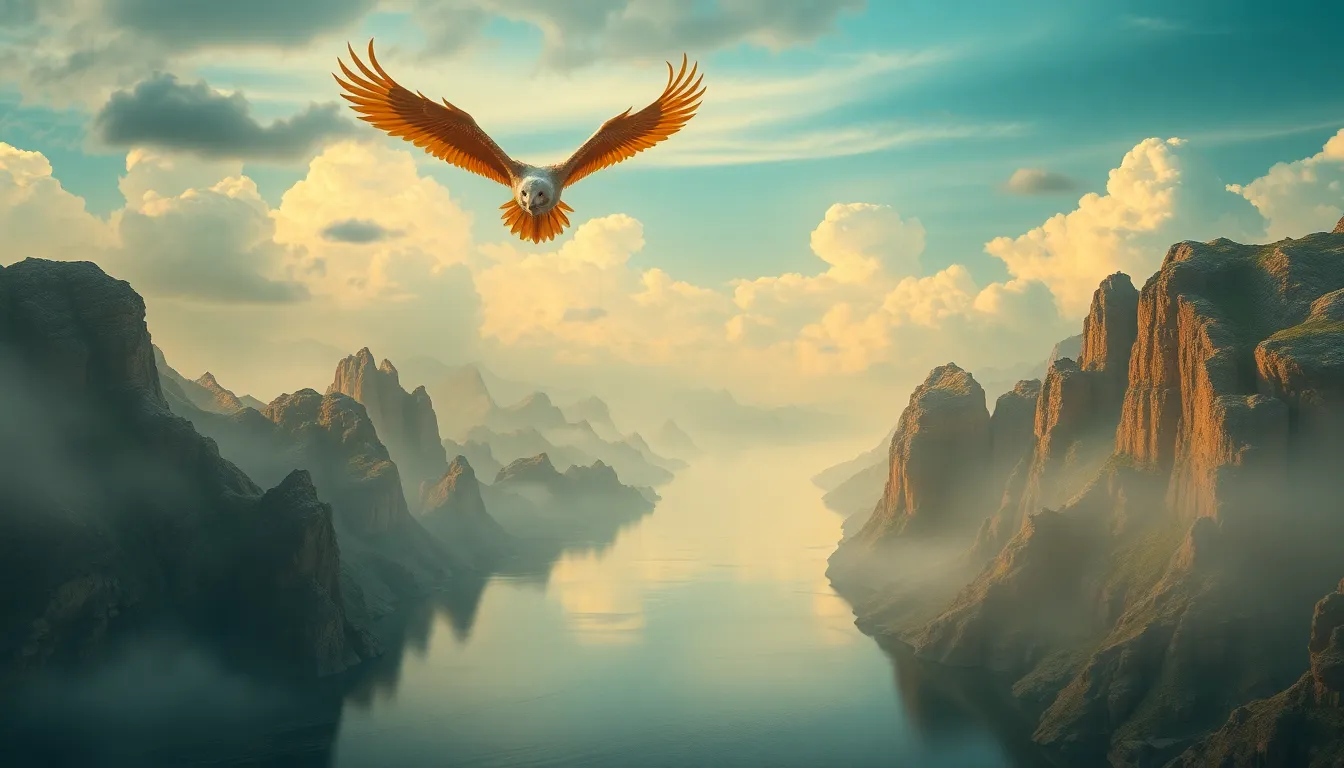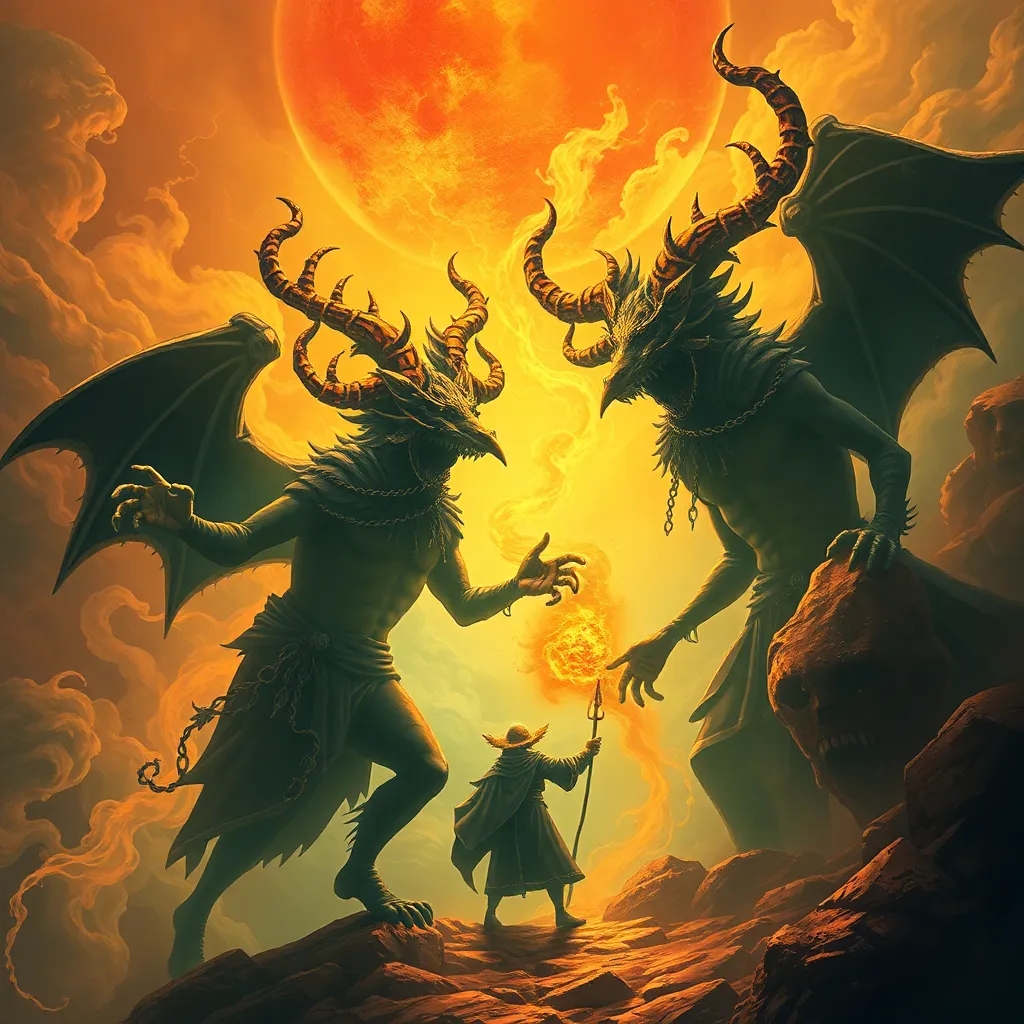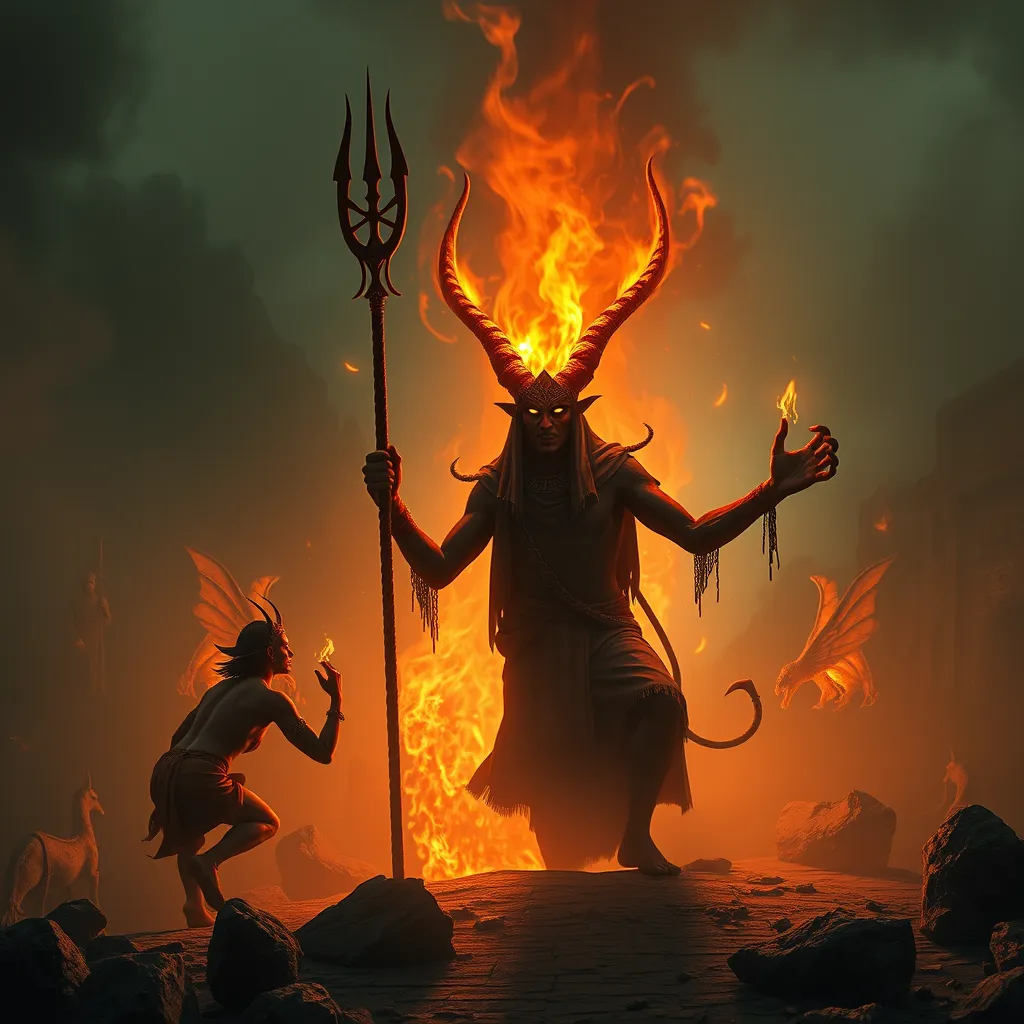The Roc’s Flight Over the Yellow River: An Exploration of Chinese Mythology
I. Introduction
The Roc, a magnificent bird of immense size and strength, occupies a prominent place in Chinese mythology. Often depicted as a creature capable of soaring above the clouds, the Roc symbolizes power, freedom, and the boundless potential of the human spirit. Its association with the Yellow River, a vital artery of Chinese civilization, deepens its significance within cultural narratives.
The Yellow River holds a revered position in China’s history, often referred to as the cradle of Chinese civilization. It has been the lifeblood of the nation, influencing agriculture, culture, and mythology. This article explores the Roc’s mythological attributes and its profound connection to the Yellow River, offering insights into their combined significance in Chinese folklore.
Through this exploration, we aim to uncover the themes that intertwine the Roc and the Yellow River, highlighting their roles in shaping Chinese identity and cultural heritage.
II. The Roc: A Symbol of Power and Freedom
The Roc is depicted in various mythical texts as an enormous bird, often compared to the eagle but on a grander scale. In the classic text “The Classic of Mountains and Seas” (Shan Hai Jing), the Roc is described as having a wingspan that could cover the sky and the power to create storms with its flight.
Key attributes and characteristics of the Roc include:
- Size: The Roc is often described as so large that its wings can overshadow the sun.
- Strength: It possesses immense strength, capable of lifting enormous weights, including mythical beings.
- Freedom: The Roc embodies the spirit of freedom, soaring high above the earth, unbound by the limitations of the mortal realm.
In Chinese folklore, the Roc plays a crucial role as a figure of aspiration and ambition. It represents the journey towards greatness and the ability to rise above challenges, making it a powerful symbol in both literature and the collective psyche of the Chinese people.
III. The Yellow River: The Cradle of Chinese Civilization
The Yellow River, known as Huang He, is often referred to as the mother river of China. Its historical and cultural importance cannot be overstated, as it has been the foundation of agriculture, trade, and settlement for thousands of years.
Significant aspects of the Yellow River include:
- Cultural Impact: The river has shaped the development of Chinese civilization, fostering cities and cultures along its banks.
- Mythological Significance: The Yellow River is often featured in myths, symbolizing the flow of life and the connection between heaven and earth.
- Legendary Setting: Many legendary tales are set against the backdrop of the Yellow River, making it a vital element of Chinese storytelling.
As a setting for legendary tales, the Yellow River serves as a canvas upon which the stories of gods, heroes, and mythical creatures, such as the Roc, unfold, establishing a deep-rooted connection between the river and the myths of the land.
IV. Interconnection of the Roc and the Yellow River
Thematic links between the Roc and the Yellow River reveal a rich tapestry of symbolism and meaning. The flight of the Roc over the waters represents not only freedom but also the harmony between land and water, earth and sky.
Key elements of this interconnection include:
- Flight Over Water: The Roc’s ability to soar above the Yellow River signifies transcendence and the triumph of the spirit.
- Harmony and Balance: The Roc and the river together illustrate the balance between strength and fluidity, power and grace.
- Mythological Representation: Their relationship embodies themes of growth, change, and the cyclical nature of life.
Through these connections, the Roc and the Yellow River symbolize the profound relationship between humanity and nature, reflecting the values and beliefs of Chinese culture.
V. Myths and Legends Featuring the Roc
Numerous stories in Chinese literature feature the Roc, each illustrating its significance and the values it embodies. One of the most notable tales is that of the Roc’s battle against the Dragon, which represents the struggle between different forces of nature.
Key stories involving the Roc include:
- The Tale of the Roc and the Dragon: A legendary confrontation that symbolizes the clash of titanic forces.
- The Flight Across the Seas: Stories of the Roc traveling vast distances, showcasing its strength and freedom.
- Interactions with Other Mythical Beings: The Roc is often depicted alongside other legendary creatures, highlighting its status in the pantheon of Chinese mythology.
Regional variations in these narratives enrich the mythology surrounding the Roc, showcasing the diverse interpretations and cultural significance of this majestic creature across different areas of China.
VI. The Roc in Contemporary Culture
In modern times, the Roc continues to inspire literature, media, and art. Its image frequently appears in works ranging from traditional literature to contemporary fantasy novels, symbolizing strength and perseverance.
Influential representations of the Roc include:
- Literature: The Roc features in modern Chinese literature, often as a metaphor for ambition and aspiration.
- Film and Media: The Roc has been depicted in various films and animated series, introducing its legend to new generations.
- Artistic Representations: The Roc is a recurring motif in Chinese art, symbolizing freedom and the pursuit of one’s dreams.
As a symbol in modern Chinese identity, the Roc embodies the values of resilience and the quest for greatness, serving as an inspiration for individuals navigating the complexities of contemporary life.
VII. Comparative Mythology: The Roc and Other Mythical Creatures
Comparative mythology reveals intriguing similarities and differences between the Roc and other legendary birds from various cultures. For instance, the Roc bears resemblance to the mythical Garuda in Hindu mythology, both being powerful birds associated with divinity and freedom.
Key points of comparison include:
- Similarities: Both the Roc and Garuda are symbols of power and serve as protectors against evil forces.
- Differences: While the Roc is often depicted in a more isolated context, Garuda is deeply integrated into the narrative of Hindu gods.
- Broader Implications: These comparisons enhance our understanding of how different cultures view the concepts of power, freedom, and the relationship between humanity and the divine.
VIII. Conclusion
In conclusion, the Roc’s flight over the Yellow River serves as a powerful symbol of freedom, strength, and the interconnectedness of nature and mythology in Chinese culture. The enduring significance of the Roc and the Yellow River reflects the rich tapestry of Chinese folklore and its ability to resonate with contemporary audiences.
As we reflect on the legacy of these myths, it becomes clear that they continue to hold relevance in today’s world, offering insights into the human experience and the quest for meaning and identity. The Roc and the Yellow River remind us of the beauty and complexity of our cultural heritage, encouraging us to appreciate the stories that shape our understanding of the world.



